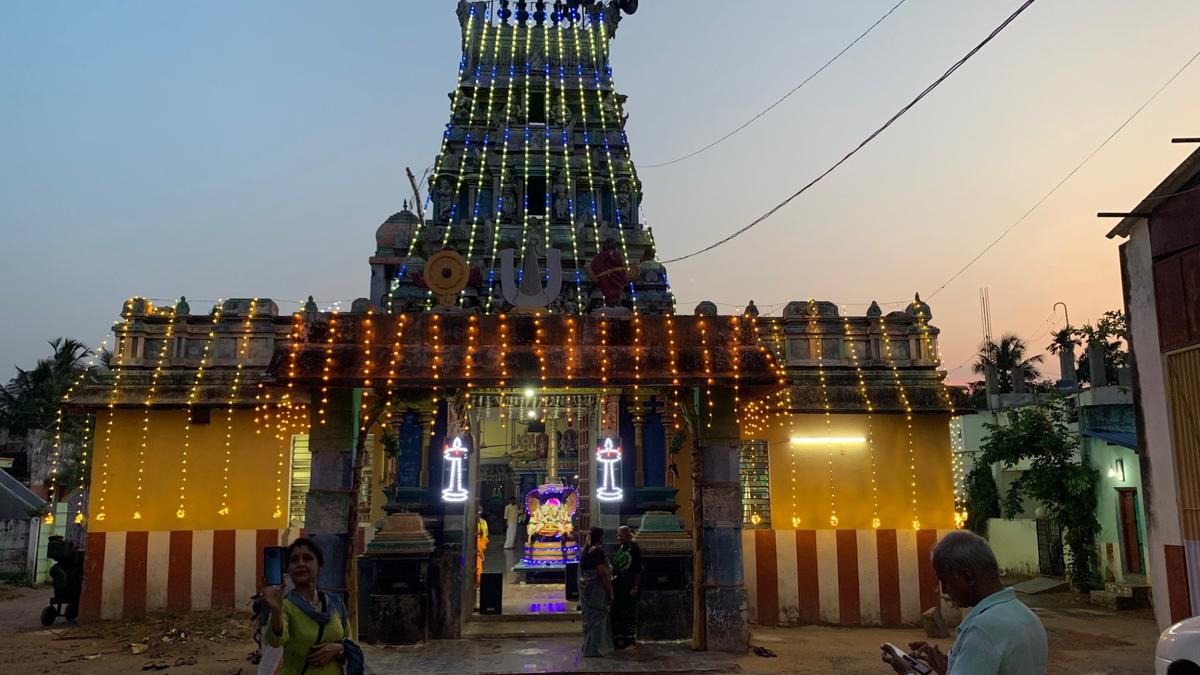
Melattur Bhagavata Mela Utsavam: Preserving an ancient art form
The Hindu
The timeless appeal of the Melattur Bhagavata Mela
Every year, during the month of May, a village not too far from the Chola heartland of Thanjavur lights up with much pomp and grandeur. Narasimha Jayanthi, a Hindu festival that is celebrated in the month of Vaisakha holds great significance for the village and hence a grand fortnight-long Nritya-Nataka Utsavam is organised.
In the truest sense Melattur is an art village because it has produced some of the most outstanding artistes, composers and personalities, who have made unparalleled contributions to art. Even today, the plays composed by the eminent playwright Melattur Venkatarama Sastri are enacted to honour the great artistic legacy of this village. The unparalleled and heartwarming hospitality that is offered by villages to their guests needs no elaboration. Members of every household guide visitors to the Varadaraja Temple where a stage is put up on the street, facing the deity.
Sustaining a tradition like Bhagavata Mela is a monumental task and the festival thrives even today due to the efforts of several artistes and art lovers. The family of the renowned dance guru and Bhagavata Mela exponent Melattur S. Natarajan continues to organise the Utsavam even after his passing. Natarajan’s brother Kumar took over the baton and has taken several steps to ensure a larger audience attends and, most importantly, appreciates the worth of the tradition.
The entire fest is livestreamed for the benefit of global audiences. In addition to this, Kumar has released several videos on the group’s official YouTube channel, demystifying the nuances of the tradition by featuring every member involved to highlight their individual contributions as well. Performance slots are also offered to budding dancers and reputed dance schools who participate with involvement to be a part of this grand tradition.
Bhagavata Mela dramas invariably prove to be a musical treat and this aspect needs to be examined separately to fully understand the appeal of these Natakams. The twelve Telugu dramas written by Venkatarama Sastri are full of traditional daruvus of different contexts – pravesha daruvus, uttara pratyuttara daruvus, samvaada daruvus, svataata daruvus, pralaaba daruvus, etc. Every Daruvu is a gem in terms of the literary and musical devices that have been incorporated by Venkatarama Sastri. Employing the choicest poetic expressions both in the dialogues as well as the lyrics of songs, Sastri has ensured that lovers of the Telugu language rejoice every phrase. Each character has a unique personality and every Paatra Pravesha Daruvu (self-introductory entrance) attempts to paint a portrait of the qualities of the character, requiring musicians and dancers to be aware of both the musical as well as contextual aspects. The daruvus are set in difficult ragas such as Ahiri, Ghanta and Maanji apart from ghana ragas such as Shankarabharanam and Arabhi. It is to be noted that Venkatarama Sastri’s musical expertise is evident from how he entirely disproves the belief of using a particular raga only for a certain rasa or a personality type. As an example, one can hear a Paatra Pravesha in Atana, a raga representing Veera rasa, for a graceful female character. A strong and fearsome male character surprisingly uses Kalyani, a raga that is typically thought of to represent grace and beauty.
Carrying forward a great Guru Parampara that traces itself back to Saint Tyagaraja himself, Tiruvaiyaru Brothers (S Narasimhan and S Venkatesan) lead the musical orchestra that is an integral part of these dramas, along with L. Prabaharan. Perfecting songs that are part of a Nritya-Natakam demand a specialised approach as they require musicians to adhere to the composer’s artistic vision in terms of ragas and overall bhava in addition to working closely with the dancers onstage. It is optimistic to note that the children of these singers N. Venkatasubramanian and V. Venkatakrishnan are now assisting them to preserve the family’s heritage. The other long-time instrumentalists who are part of the orchestra include Lalgudi K. Ramaprasad on the violin and B. Gokulakrishnan on the flute, who greatly contribute to the dramas by way of calculative musical interludes and aesthetic raga insertions, in addition to accompanying the vocalists.
Mridangam is of paramount importance in the dramas and requires knowledge of the contents of the songs as well as anticipating the moves of the dancers onstage and coordinating with their footwork. Nagai P. Sriram single-handedly provides percussion support, offering much-needed rhythmic diversity for every line that is musically repeated several times with different lyrics in a typical Bhagavata Mela Daruvu.

nyone trying to slot Hong Kong filmmaker Ann Hui into a particular genre will be at a loss, for all through her 45 year-long career, she has moved easily between varied spaces, from independent cinema to the mainstream, from personal films to a bit of action too. For that matter, she has made a horror film too. Ask her about it and the 77-year old, who was conferred with the 29th International Film Festival of Kerala (IFFK)‘s Lifetime achievement award, says with disarming candour that she was just trying to see what she was good at.










